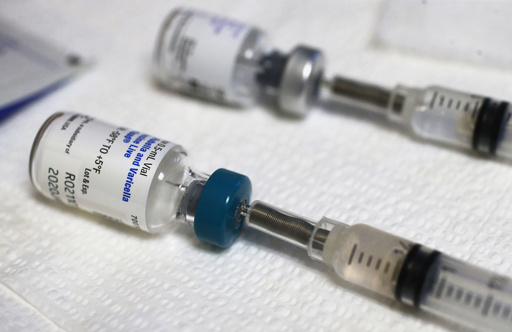
Fifteen cases of measles, primarily affecting school-aged children, have been reported in a small county in West Texas known for having one of the state’s highest rates of vaccine exemptions.
According to Zach Holbrooks, the Director of the South Plains Public Health District, the department was first alerted to the initial two cases in Gaines County in late January. These cases involved two children who had visited a physician in Lubbock.
The health official indicated that some of the infections may be associated with private religious schools in the area. Holbrooks emphasized that the investigation is still ongoing, stating, “I wouldn’t say they’re all connected, but our teams are looking into exposure sites and the background of those cases.”
In response to this outbreak, local health authorities set up a drive-through vaccination clinic last week to facilitate immunizations and provide screening for residents.
In 2024, the U.S. has seen a notable uptick in measles cases, including a significant outbreak in Chicago that affected over 60 individuals. Currently, health officials in metropolitan Atlanta are trying to manage a measles case that has spread to two unvaccinated family members.
Texas law permits children to receive exemptions from school vaccination requirements based on personal beliefs, including religious convictions. Over the past decade, the percentage of children receiving exemptions has increased from 0.76% in 2014 to 2.32% last year, as reported by the Texas Department of State Health Services.
Gaines County stands out with one of the highest exemption rates for school-aged children in Texas. Nearly 14% of children from kindergarten through grade 12 had an exemption during the 2023-2024 school year, which is over five times the state average of 2.32% and exceeds the national average of 3.3%.
However, DSHS spokesperson Lara Anton noted that the actual number of unvaccinated children in Gaines County is likely much higher due to the high number of homeschooled children whose vaccination data is not included in state reporting.
The measles, mumps, and rubella (MMR) vaccines are provided in a two-dose schedule, with the first dose typically recommended between 12 to 15 months and the second between 4 to 6 years of age. These vaccines are generally required for children attending most public schools in the U.S.
Despite the requirement, vaccination rates have dropped nationally, further exacerbated by the COVID-19 pandemic. Most states now fall short of the 95% vaccination coverage necessary to safeguard communities against potential measles outbreaks. During this period, various proposals for modifying vaccine requirements have surfaced, particularly as anti-vaccine activist Robert F. Kennedy Jr. awaits confirmation to lead the Department of Health and Human Services.
One of the early cases from Gaines County had traveled to neighboring New Mexico while still contagious; however, no new infections have been reported there. New Mexico Department of Health spokesperson Robert Nott confirmed that while there has been communication with Texas officials, no known exposure to measles exists within his state. He stated, “We’re going to watch this very closely.”
Earlier in January, two measles cases were documented in the Houston area, but Holbrooks clarified that the cases in West Texas seem unrelated.
Measles is an extremely contagious virus that can linger in the air for up to two hours. According to the U.S. Centers for Disease Control and Prevention, up to 90% of susceptible individuals will contract the virus upon exposure. Before the introduction of the vaccine in 1963, the United States recorded approximately 3 million to 4 million measles cases annually. Today, the annual figure is usually below 200 cases.

